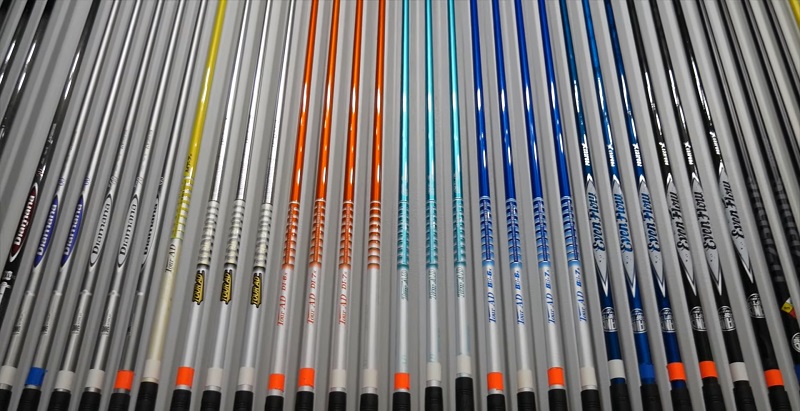Are you interested in improving your game of golf? One place to start is by choosing the right golf shaft. While some players may think that simply taking any club and adding a random shaft will work, this isn’t necessarily true. You should approach the task of selecting a golf shaft with careful consideration for achieving maximum performance on the course.
In this blog post, we’ll discuss what factors should be considered when deciding which particular type of golf shaft best suits your playing style and ability level. Whether you’re an amateur or professional player, these tips will provide guidance for choosing a suitable option for elevating your current skill set!
What Is The Importance Of Golf Shafts?
As any experienced golfer knows, the proper golf club selection can make all the difference in performance on the course. While many factors go into this decision, one of the most critical is choosing the right golf shaft.
These seemingly small components serve a big role in transferring the energy from your swing to the club head, ultimately determining your shot’s trajectory, accuracy, and distance. Given the importance of these factors, it’s clear that golfers of all skill levels must prioritize finding the right shaft to optimize their game.
Whether you’re a seasoned pro or an enthusiastic beginner, investing in the perfect golf shaft can make all the difference in achieving your desired results on the fairway.
What Factors To Consider When Looking For The Right Golf Shaft?
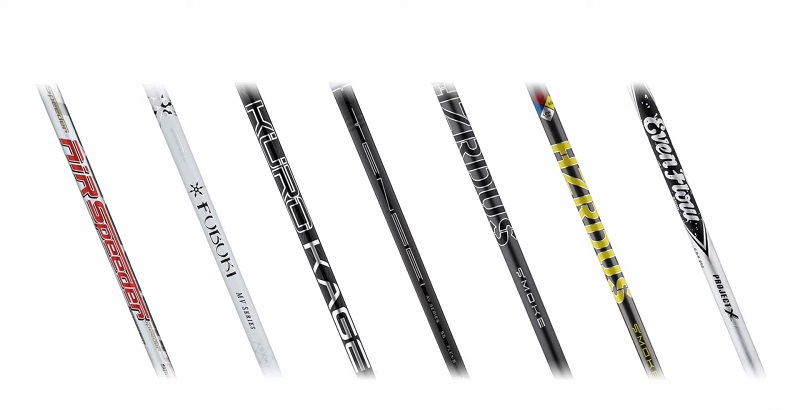
Choosing the right golf shaft is crucial to improve your golf game. There are several factors that should be considered when choosing a shaft. Here are some of the most important factors:
Flexibility: The flexibility of the shaft is an important factor to consider. The flexibility of the shaft determines how much the shaft will bend during the swing. Ladies, Senior, Regular, Stiff and X-Stiff are the four most common shaft flexes. Players with slower swing speeds typically use a more flexible shaft, while players with faster swing speeds use a stiffer shaft.
Weight: The weight of the shaft is another important factor to consider. A heavier shaft can provide more control and accuracy, while a lighter shaft can provide more swing speed and distance. Finding a shaft that feels comfortable and allows you to have good control over the club is important.
Length: The length of the shaft can also affect the club’s swing. Taller players usually require longer shafts, while shorter players require shorter shafts. Finding a comfortable length to swing the club smoothly and with good control is important.
Material: The shaft’s material can affect the club’s overall feel. The two most common materials used for shafts are graphite and steel. Graphite shafts are lighter and can provide more distance, while steel shafts are heavier and can provide more control and accuracy.
Swing Speed: Your swing speed is another important factor when choosing a shaft. If your swing speed is slow, you may need a more flexible shaft to help generate more power. On the other hand, if your swing speed is fast, you may need a stiffer shaft to help control your shots.
Trajectory: The trajectory of your shots is another important factor to consider. If you have a high ball flight, you may need a stiffer shaft to help bring the ball flight down. If you have a lowball flight, you may need a more flexible shaft to help increase the trajectory.
Feel: Ultimately, the feel of the shaft is one of the most important factors to consider. You want a shaft that feels comfortable in your hands and gives you good control over the club. Trying out different shafts and finding one that feels right for you is important.
How To Choose The Right Golf Shaft For You?
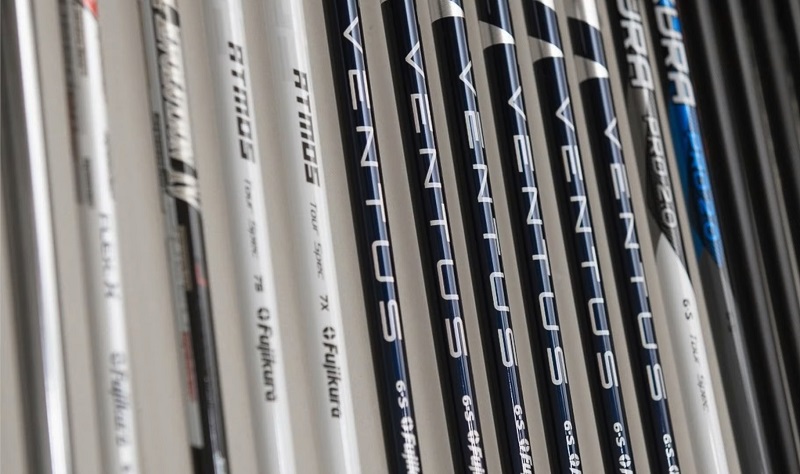
Types of Golf Shafts
Golf shafts come in different materials, and the type of shaft you choose can have a significant impact on your golf game. The three most common types of golf shafts are steel, graphite, and multi-material. Each has its own set of advantages and disadvantages, which can affect the feel, accuracy, and distance of your golf shots.
Steel Shafts
Steel shafts are the traditional choice for golfers, and they are still a popular option today. Steel shafts are heavier and more durable than graphite shafts, providing a solid and stable feel that many golfers prefer. They are also less expensive than graphite and multi-material shafts. Steel shafts are commonly used by professionals and low-handicap golfers who need more control and precision in their swings.
Pros:
- Provides a more stable and solid feel.
- Offers better accuracy and control.
- Less expensive than graphite and multi-material shafts.
Cons:
- Heavier than graphite and multi-material shafts
- Transmits more vibrations to the golfer’s hands, which can cause fatigue or discomfort
Graphite Shafts
Graphite shafts are a popular choice among golfers of all skill levels, especially those who need more distance on their shots. They are lighter than steel shafts, which can increase clubhead speed and generate more power. Graphite shafts also provide less feedback to the hands, making them a good option for golfers with hand or arm injuries.
Pros:
- Lighter weight can increase clubhead speed and generate more power
- Reduces the vibrations felt by the golfer, making them a good option for those with hand or arm injuries
- More forgiving and can provide more distance on off-center shots
Cons:
- More expensive than steel shafts
- Can lack the same level of control and feel as steel shafts
Multi-Material Shafts
Multi-material shafts combine the advantages of steel and graphite shafts. They are made of a combination of materials, such as carbon fiber, titanium, or other metals. These shafts provide a balance of weight, stability, and flexibility, making them an excellent choice for golfers who want a more customized shaft that fits their swing.
Pros:
- Customizable to match the golfer’s swing
- Provides a balance of weight, stability, and flexibility
- Can improve accuracy and distance
Cons:
- More expensive than steel and graphite shafts
- Require more customization and fitting to find the right match for the golfer’s swing
What Type Of Golf Shaft Materials Would Best Suit For You?
Beginners and high-handicap golfers may benefit from graphite shafts because they are lighter and more forgiving. Golfers who prioritize control and precision may prefer steel shafts, while those looking for a balance of weight and performance may opt for multi-material shafts.
Would you like to know what shaft Tiger Woods, a golf legend, has chosen for his golf set? Read more here!
Golf Shaft Flex
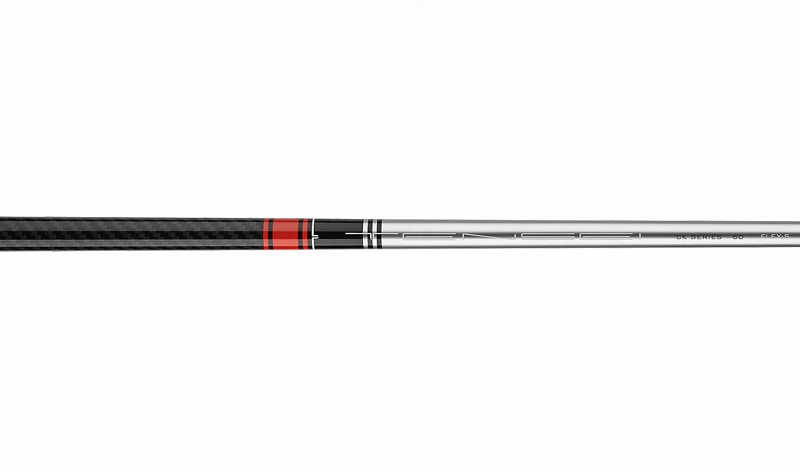
Shaft flex refers to the ability of a golf shaft to bend and recover during a swing. The amount of flex in a shaft can affect the trajectory, accuracy, and distance of your shots. Shaft flex is determined by a combination of factors, including the materials used to make the shaft, the diameter and thickness of the shaft, and the shape of the shaft.
There are five main types of shaft flex: Extra Stiff (X), Stiff (S), Regular (R), Senior (S), and Ladies (L). Each has its own unique characteristics that can affect your game.
Extra Stiff (X)
Extra stiff shafts are the stiffest and least flexible of all the shaft flex options. They are designed for golfers with very high swing speeds and are commonly used by professional golfers. Extra stiff shafts provide less spin, a lower trajectory, and more distance. However, they can also be more difficult to control for golfers with slower swing speeds.
Stiff (S)
Stiff shafts are less rigid than extra stiff shafts but still offer less flex than regular or senior shafts. They are designed for golfers with faster swing speeds and provide a balance of control and distance. Stiff shafts also offer less spin than regular or senior shafts, which can result in more roll on the fairway.
Regular (R)
Regular shafts are the most common type of shaft flex and are designed for golfers with moderate swing speeds. They offer a balance of control and distance and are typically used by mid-handicap golfers. Regular shafts provide a mid-trajectory ball flight and are more forgiving than stiffer shafts.
Senior (S)
Senior shafts are designed for golfers with slower swing speeds, typically over the age of 50. They are more flexible than regular shafts and provide more distance and height on shots. Senior shafts are also more forgiving and can help reduce the amount of slice or hook on a shot.
Ladies (L)
Ladies shafts are similar to senior shafts in terms of flexibility and are designed for female golfers. They are more flexible than regular shafts and can help female golfers achieve more distance and height on shots. Ladies shafts are also more forgiving and can help reduce the amount of slice or hook on a shot.
What Golf Shaft Flex Best Suits Your Swing?
To determine which shaft flex is right for you, consider your swing speed, ball flight preferences, and overall golfing goals. A stiffer shaft may be the best option if you have a faster swing speed and are looking for more control. If you have a slower swing speed and are looking for more distance and forgiveness, a more flexible shaft may be the way to go. Working with a professional club fitter can also help you determine the right shaft flex for your game.
Below is a chart that outlines what golf shaft flex is right for different swing speeds:
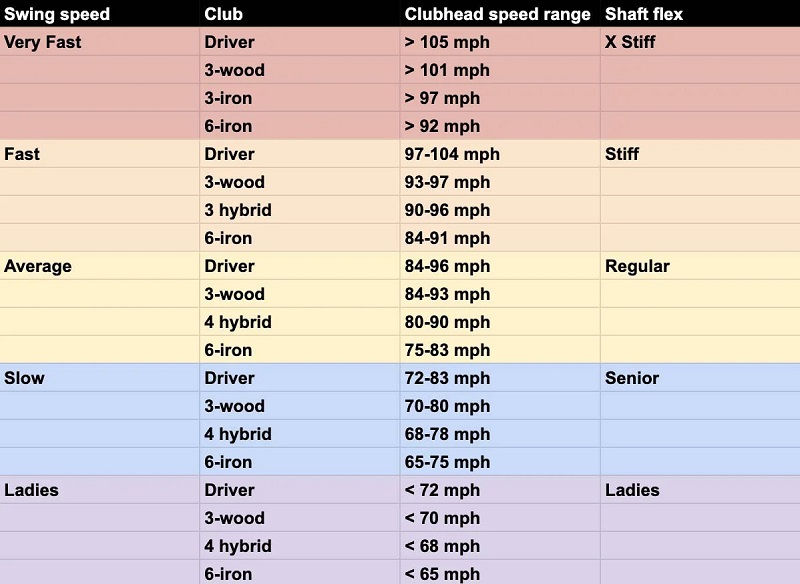
Read more: 10 Best Irons for Mid Handicappers 2023: A Comprehensive Review
Golf Shaft Weight
Shaft weight is an important factor to consider when choosing a golf shaft. The weight of the shaft can have a significant impact on your swing and overall performance. Here’s a look at how shaft weight affects your game and some recommendations for choosing the right weight for you.
Importance of Shaft Weight
The shaft’s weight affects the club’s overall weight, which can impact your swing speed and ball flight. A heavier shaft can provide more stability and control, while a lighter shaft can increase clubhead speed and generate more power. However, it’s important to note that the weight of the shaft should be balanced with other factors, such as flex and length, to ensure a proper fit for your swing.
Recommendations for Choosing Shaft Weight
The right shaft weight for you will depend on your skill level and personal preferences. Here are some general recommendations based on skill level:
- Beginner Golfers: A lighter shaft is often recommended for beginner golfers as it can help increase clubhead speed and generate more power. A shaft weight between 50-60 grams is a good starting point.
- Intermediate Golfers: Intermediate golfers may benefit from a slightly heavier shaft to improve accuracy and control. A shaft weight between 60-70 grams is a good range to consider.
- Advanced Golfers: Advanced golfers may prefer a heavier shaft for increased stability and control. A shaft weight between 70-80 grams may be a good choice.
It’s also important to consider personal preferences when choosing a shaft weight. Some golfers may feel more comfortable with a lighter or heavier shaft depending on their swing style and feel. It’s a good idea to test out different shaft weights to determine what feels best for you.
Golf Shaft Length
The length of your golf club’s shaft can also significantly impact your golf game. A shaft that is too long or too short can affect your swing, balance, and posture. Therefore, it is essential to choose the right shaft length to maximize your performance on the course.
How Does Shaft Length Impacts Your Swing?
A longer shaft can generate more clubhead speed and distance, but it can also make it more challenging to control the clubface and make consistent contact with the ball. A shorter shaft, on the other hand, can provide more control and consistency but may sacrifice some distance.
Differences Between Standard and Custom Shaft Lengths
Standard shaft lengths are the most common option for golf clubs and are typically designed to fit the average golfer’s height and swing characteristics. However, golfers who are taller or shorter than average may benefit from custom shaft lengths that fit their specific needs.
Custom shaft lengths can also benefit golfers with specific swing characteristics, such as a flatter or steeper swing plane, which may require a longer or shorter shaft length to achieve optimal results.
Determining the Right Shaft Length for You
To determine the right shaft length for you, consider the following factors:
- Height: A golfer’s height is one of the primary considerations when determining the appropriate shaft length. Generally, taller golfers may benefit from longer shafts, while shorter golfers may benefit from shorter shafts.
- Swing Speed: A golfer’s swing speed can also impact the appropriate shaft length. Golfers with slower swing speeds may benefit from a shorter shaft, while golfers with faster swing speeds may prefer a longer shaft.
- Swing Characteristics: Your swing characteristics, such as swing plane and tempo, can also impact the appropriate shaft length. Golfers with a flatter swing plane may benefit from a longer shaft, while golfers with a steeper swing plane may prefer a shorter shaft.
- Comfort: Ultimately, the most important factor in determining the right shaft length is your comfort level. Choose a length that feels comfortable and natural to you, and that allows you to make consistent contact with the ball.
What Is The Kick Point On A Golf Shaft?
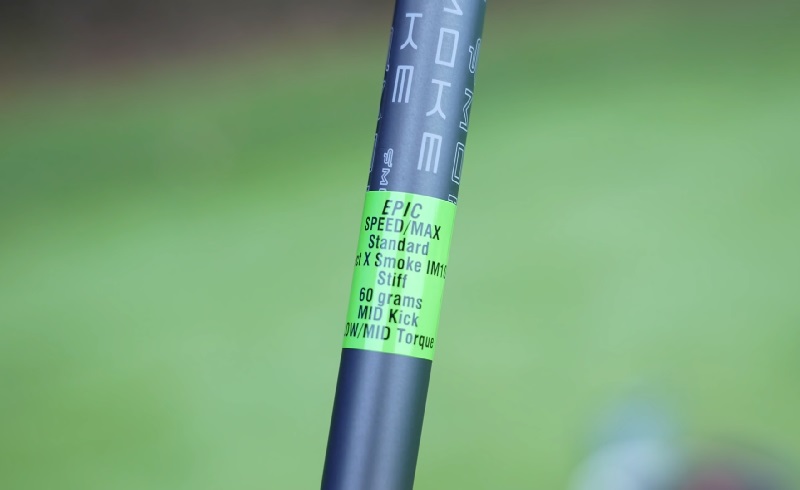
The kick point, also known as the bend point, is the location on a golf shaft where it flexes the most during the swing. This is an important characteristic of a golf shaft, as it can significantly affect the trajectory, spin, and distance of your shots. The position of the kick point varies depending on the shaft design and material.
There are three types of kick points: low, mid, and high. A low kick point is located near the club head, and it promotes a higher ball flight with more spin. This makes it a good choice for golfers who need more height and distance on their shots. A mid-kick point is located in the middle of the shaft and provides a balance of distance and control, making it a popular choice among many golfers. A high kick point is located near the grip end of the shaft, and it promotes a lower ball flight with less spin, which can be beneficial for golfers who want to reduce spin and gain more control.
When choosing a golf shaft based on kick point, it is important to consider your swing speed and tempo. A faster swing speed and a more aggressive swing tempo typically require a stiffer, low kick-point shaft that can handle the extra force and generate more power. Golfers with a slower swing speed and smoother tempo may benefit from a higher kick point shaft that can help them achieve a more controlled ball flight.
It is recommended that golfers work with a professional fitter or club builder to determine the right kick point for their swing. They can assess your swing characteristics and recommend the appropriate shaft design and kick point to optimize your course performance.
What Is Shaft Torque?
Shaft torque is a term used to describe the amount of twisting or rotation a golf shaft undergoes during a swing. When a golf club is swung, the force generated by the golfer’s swing causes the shaft to bend and twist. Shaft torque measures how much the shaft twists under this force.
Shaft torque is measured in degrees and is usually listed on the golf shaft’s specifications. The lower the degree of torque, the less the shaft will twist during the swing. Golfers with a smoother swing may prefer a shaft with lower torque because it provides better accuracy, while those with a more aggressive swing may prefer a higher torque shaft for increased distance.
It’s important to note that shaft torque is just one factor to consider when choosing a golf shaft.
How To Properly Fit A Golf Shaft?
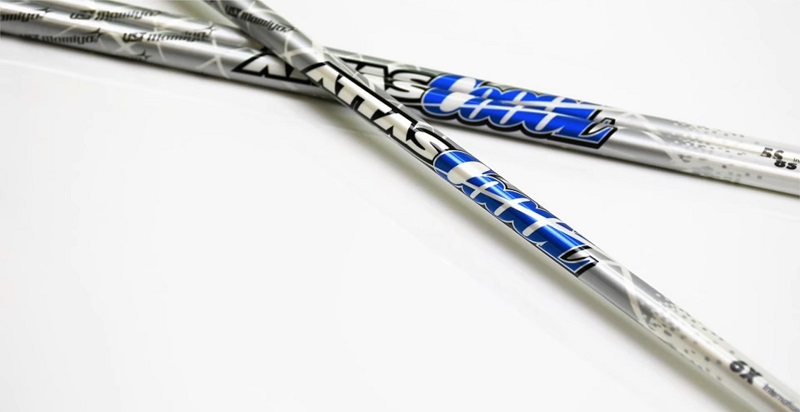
Properly fitting a golf shaft is essential to optimize your golf game. A well-fitted shaft can help increase your shots’ distance, accuracy, and consistency. Here are the steps to properly fit a golf shaft:
Determine your swing speed
The first step to fitting a golf shaft is to determine your swing speed. Swing speed is the speed at which the club head travels when it strikes the ball. Swing speed is typically measured in miles per hour (mph) and can be measured using a launch monitor or by a trained professional.
Determine your tempo
Your tempo is the rhythm of your golf swing, and it can be classified as fast, moderate, or slow. Your tempo will determine the flexibility of the shaft you need. A fast tempo requires a stiffer shaft, while a slower tempo requires a more flexible shaft.
Determine your release point
The release point is when the clubhead releases or unhinges during the downswing. Your release point will help determine the kick point or flex point of the shaft you need.
Test different shafts
Once you have determined your swing speed, tempo, and release point, it’s time to start testing different shafts. You can do this by trying out different clubs at a golf store or by visiting a professional club fitter. A club fitter can use a launch monitor to analyze your swing and recommend the best shaft for your game.
Consider other factors
When fitting a golf shaft, it’s also important to consider other factors, such as the weight and length of the shaft, as well as the grip size and type. All of these factors can impact the feel and performance of the club.
How Do You Know You’ve Chosen The Wrong Golf Shaft?
Choosing the wrong golf shaft can be one of the most frustrating mistakes a golfer can make. The wrong shaft can throw off your swing, resulting in poor contact and inaccurate shots. To determine if you’ve chosen the wrong golf shaft, look out for these signs:
- Poor Performance – If your shots aren’t as consistent or accurate as usual, it could be a sign that your shaft isn’t right for you.
- Unusual Ball Flight – If you notice that the ball is curving more than usual, this could indicate the wrong golf shaft. The curvature of the ball can be affected by the flex of your shaft, and if it’s wrong, you won’t see the right trajectory.
- Incorrect Feel – If you don’t feel comfortable with the shaft when you swing it, this could be a sign that it isn’t suited to your game. A good shaft should feel natural, and you should be able to hit the ball confidently.
- Poor Contact – If your contact is off, it could be due to a combination of things, including an ill-suited shaft. Poor contact can cause slice or hook shots indicating something isn’t quite right.
Read more: Golf Bag Size: Height, Weight & Diameter
Conclusion
After reading this blog post, you are now well-equipped to choose the right golf shaft for your game. Not only have we looked at some of the primary benefits and considerations for choosing a golf shaft, but we also have discussed factors like your skill level, the type of club head, shaft flex and the right materials. Taking into account all these factors will let you confidently select the right golf shaft for a more effective swing.
Remember that practice is key when improving your overall golf skills. Start your research early and take advantage of informative websites or get advice from experienced players to make sure you are selecting the best shaft that works specifically for you and enhances your game performance. As long as you work on perfecting the use of this tool with plenty of practice shots, a good golf swing with better scores is well within reach!
FAQs
Are Shorter Shafts Easier To Hit?
Lightly shorter shafts can be easier to hit for some players, as they offer more control on the clubface. However, this highly depends on a player’s individual swing characteristics and should be determined by proper testing and fitting.
What Is The Difference Between A High Kick Point And Low Kick Point Shaft?
A high kick point shaft will generally produce a higher launch angle, more spin and less control. A low kick point shaft promotes a lower ball flight with less spin, benefiting golfers who want to reduce spin and gain more control.
What Happens If The Golf Shaft Is Too Stiff?
A shaft that is too stiff will cause the golfer to lose power and accuracy. It can also cause incorrect clubhead placement at impact resulting in poor shot direction, distance and trajectory. It is important to use a shaft that best suits your swing speed and tempo.
What Happens If The Golf Shaft Is Too Flexible?
If the golf shaft is too flexible, it can cause the ball to fly lower and with more spin. Additionally, a golf shaft that is too flexible can also lead to erratic shots that travel less far or as straight as desired. Therefore, selecting a shaft with the correct flex for your game is important to maximize performance and accuracy.
How Do I Know Which Driver Shaft Is Best For Me?
The best way to determine what driver shaft is best for you is by properly fitting and using a launch monitor to analyze the data. This will help to understand what type of flex works best for your swing speed, the optimal trajectory and spin rate for each club, and what kind of feel you get from different shafts. Consulting a golf pro or club fitter can also be beneficial as they have experience selecting the correct golf equipment for various players.
THANK YOU FOR READING! HOPE IT HELPS.

